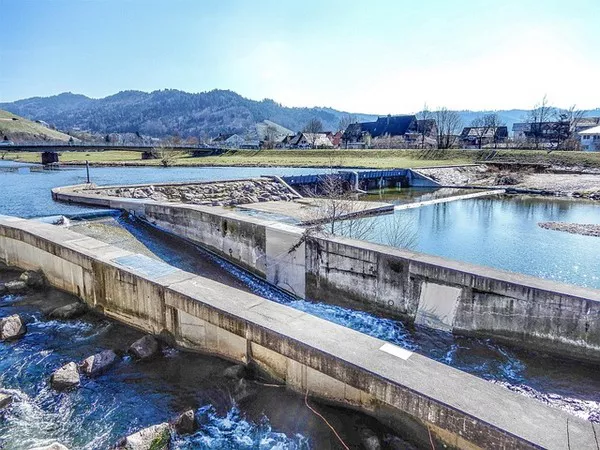Wastewater treatment plants are critical infrastructural assets that play a pivotal role in maintaining environmental sustainability and public health standards. These facilities are designed to treat wastewater from residential, commercial, and industrial sources, ensuring that contaminants are removed or reduced to safe levels before the water is discharged back into the environment. However, the construction of such plants involves significant financial investment due to the complex engineering, regulatory compliance, and technological requirements involved. In this article, we delve into the various factors that influence the cost of building a wastewater treatment plant, providing a comprehensive overview of the expenses involved and considerations for stakeholders.
1. Factors Influencing Cost
a. Plant Type and Size
Wastewater treatment plants vary widely in size and complexity, depending on the population they serve and the volume of wastewater they are designed to treat. The cost can differ significantly between small-scale plants intended for rural communities and large-scale facilities catering to urban populations or industrial zones. The type of treatment processes employed (e.g., primary, secondary, tertiary) also impacts costs, with more advanced treatments generally requiring higher capital investments.
b. Site Selection and Preparation
The location and topography of the site selected for the plant are crucial factors affecting construction costs. Sites in urban areas may require land acquisition, demolition of existing structures, or complex excavation work, all of which can escalate expenses. Additionally, geological considerations such as soil stability and groundwater conditions can necessitate specialized foundation designs or groundwater management systems, adding further to the overall project cost.
c. Design and Engineering
The design phase of a wastewater treatment plant is a critical determinant of both initial construction costs and long-term operational efficiency. Detailed engineering plans, including process flow diagrams, equipment specifications, and structural designs, are essential to ensure regulatory compliance and operational effectiveness. Costs in this phase include consultancy fees, design reviews, and potentially pilot-scale testing of treatment processes to validate performance.
d. Construction Materials and Labor
Materials and labor constitute a significant portion of the total construction cost. Specialized equipment, such as pumps, clarifiers, and filtration systems, must meet stringent quality standards and may require customization depending on the specific treatment requirements. Skilled labor for construction and installation of mechanical, electrical, and plumbing systems is essential and can be costly, particularly in regions with high labor rates or during periods of high demand in the construction industry.
e. Regulatory Compliance and Permitting
Compliance with environmental regulations and obtaining necessary permits are non-negotiable aspects of wastewater treatment plant construction. Costs associated with environmental impact assessments, permit application fees, and compliance monitoring throughout the construction process must be factored into the project budget. Delays or revisions due to regulatory requirements can also impact project timelines and escalate costs.
f. Project Management and Contingencies
Effective project management is essential to mitigate risks and control costs during construction. Project managers oversee scheduling, procurement, and coordination of subcontractors, ensuring that the project remains on budget and on schedule. Contingency funds are also set aside to address unforeseen challenges such as weather delays, design revisions, or unexpected site conditions, safeguarding against cost overruns.
2. Cost Breakdown and Examples
a. Capital Costs
The capital cost of building a wastewater treatment plant typically includes:
Civil Works: Site preparation, excavation, foundation construction, and building erection.
Mechanical Works: Installation of treatment process equipment, piping systems, and HVAC (heating, ventilation, and air conditioning) systems.
Electrical Works: Installation of electrical panels, wiring, lighting, and instrumentation systems.
Instrumentation and Control: Implementation of control systems, SCADA (Supervisory Control and Data Acquisition), and automation for monitoring and managing plant operations.
b. Operational Costs
Beyond construction, operational costs include ongoing expenses such as:
Labor: Salaries for plant operators, maintenance staff, and administrative personnel.
Energy: Electricity and fuel required to power pumps, blowers, and other operational equipment.
Chemicals: Treatment chemicals for disinfection, pH adjustment, and nutrient removal.
Maintenance: Routine maintenance of equipment, repairs, and replacement of consumables.
3. Case Studies
a. Small-Scale Plant Example
A small wastewater treatment plant serving a rural community of 5,000 people might have a construction cost ranging from $2 million to $5 million, depending on local conditions and treatment requirements. This cost would cover basic primary and secondary treatment processes sufficient to meet regulatory standards for discharge.
b. Medium to Large-Scale Plant Example
In contrast, a medium to large-scale plant designed to treat wastewater from a city of 100,000 inhabitants could cost anywhere from $20 million to $100 million or more. This higher cost reflects the need for advanced treatment technologies, larger capacities, and extensive infrastructure to handle higher volumes of wastewater and more stringent regulatory requirements.
4. Cost-Saving Measures and Considerations
a. Design Optimization
Investing in detailed design and engineering during the planning phase can optimize construction costs by minimizing design changes and ensuring efficient use of materials and labor.
b. Modular Construction
Modular construction techniques, where components of the treatment plant are prefabricated off-site and assembled on-site, can reduce construction time and labor costs.
c. Energy Efficiency
Incorporating energy-efficient technologies and renewable energy sources (e.g., solar panels, biogas recovery systems) can reduce long-term operational costs associated with energy consumption.
d. Public-Private Partnerships (PPP)
PPP models can provide alternative financing and management structures, leveraging private sector expertise to optimize costs and operational efficiency over the plant’s lifecycle.
See Also WHAT CAUSES A SEWER SMELL IN MY HOUSE?
Conclusion
Building a wastewater treatment plant involves a substantial financial commitment due to the complexity of engineering, regulatory requirements, and technological advancements required to ensure effective wastewater treatment. By understanding the factors influencing costs, stakeholders can make informed decisions to optimize project budgets and timelines while meeting environmental and public health objectives. As global populations grow and environmental regulations evolve, the demand for sustainable wastewater treatment solutions will continue to drive innovation and investment in this critical infrastructure.
In conclusion, while the upfront costs of building a wastewater treatment plant can be considerable, the long-term benefits in terms of environmental stewardship and public health make these investments essential for sustainable development in communities worldwide.

